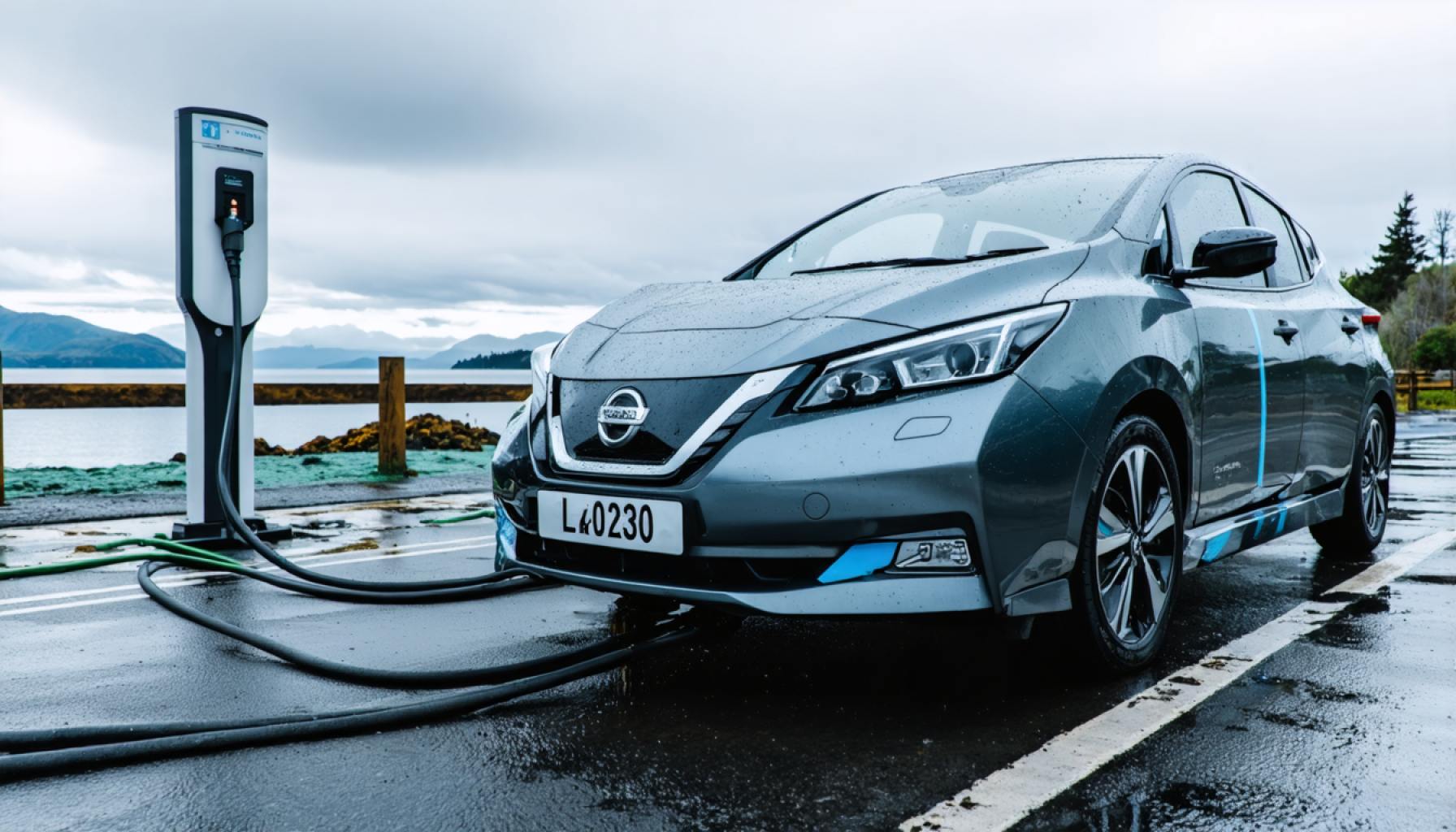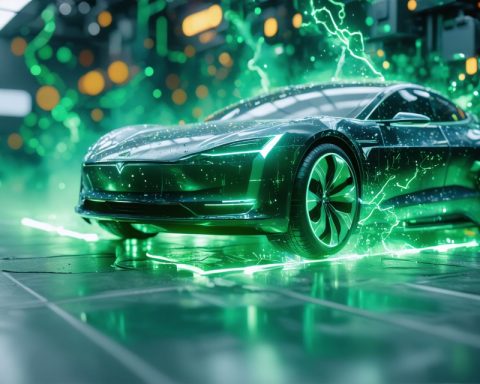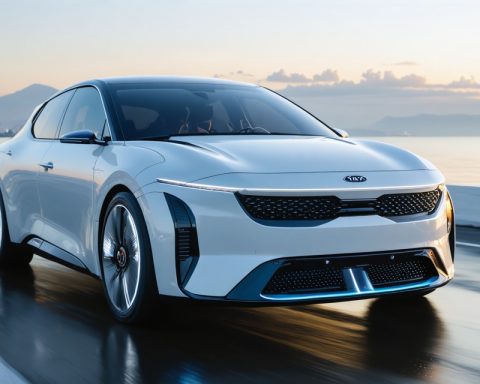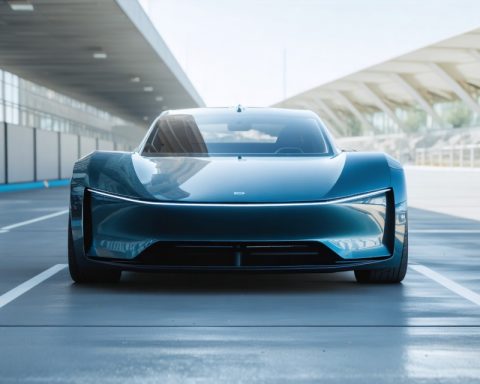- An innovative EV charging project at Springs Junction on New Zealand’s South Island showcases the future of sustainable energy in remote regions.
- Meridian Energy and Relectrify collaborate to reuse recycled Nissan Leaf batteries in the charging stations, highlighting an eco-friendly solution for “charging deserts.”
- The project relies on three 130 kWh battery energy storage systems, charged during low demand hours and used during peak times, optimizing energy use.
- Overcoming remote location and power infrastructure challenges, engineers developed adaptive technologies to ensure efficient energy usage.
- Tim Calder from Meridian encourages responsible energy use, fostering a community-oriented approach to sharing resources at Springs Junction.
- Co-funded by EECA’s low emission transport fund, this initiative exemplifies human ingenuity and aids the broader adoption of electric vehicles in isolated areas.
- Springs Junction serves as a symbol of sustainable innovation, utilizing past technology wisely for future advancements in green mobility.
Amidst the rolling landscapes and winding roads of New Zealand’s South Island, a quiet revolution in sustainable energy is unfolding at Springs Junction—a locale renowned not for its bustle, but its serene remoteness. Here, just over 200 kilometers north of Christchurch, an innovative solution has been brought to life, offering a glimpse into the future of electric vehicle (EV) charging in isolated regions.
Springs Junction now hosts electric vehicle chargers that stand out not just for their utility, but for the progressive technology fueling them. These chargers, the result of a collaboration between New Zealand energy giant Meridian Energy and Australian start-up Relectrify, are a beacon of hope for combating the dreaded “charging deserts” that dot the South Island.
What sets this project apart is its reliance on recycled Nissan Leaf batteries. The installation uses three 130 kWh battery energy storage systems, ingeniously repurposed from these electric cars. During hours when local electricity demand dwindles—between 11 p.m. and 4 a.m.—these batteries are charged. As dawn breaks and the demand creeps up, the stored energy is discharged, providing the vital power needed to keep the chargers humming under the daylight.
The project traversed a rocky road to completion, encountering myriad challenges tied to its location’s remote nature and the constraints of the local power infrastructure. Innovation was not a choice but a necessity, demanding Meridian and Relectrify engineers to rewrite operational codes ensuring these batteries seamlessly drew power from the grid only when ample supply was available. Each hurdle further underscored the essential role of adaptive thinking and technological dexterity.
Tim Calder, leading the charge from Meridian’s product innovations, exemplifies Kiwi tenacity, urging EV drivers to be mindful of their energy usage at Springs Junction. With limited kilowatt hours at their disposal, users are encouraged to “take only what they need,” nurturing a considerate and efficient approach to sharing resources.
The Springs Junction project, co-funded by Energy Efficiency and Conservation Authority’s (EECA’s) low emission transport fund, is more than infrastructure—it’s a testament to human ingenuity and a commitment to a greener, more connected future. This initiative not only advances EV usability in remote locations but also paves the way for sustainable practices worldwide, showcasing a practical application of electric vehicle batteries beyond their traditional lifecycle.
As the world watches, Springs Junction stands as a lighthouse, guiding the way towards sustainable innovation, harnessing yesterday’s technology to fuel tomorrow’s adventures.
Revolutionizing Remote EV Charging: Insights from New Zealand’s Springs Junction
Exploring the Future of Sustainable EV Charging
Springs Junction: Nestled amidst the verdant landscapes of New Zealand’s South Island, Springs Junction is leading a quiet yet impactful revolution in sustainable energy. This initiative is pivotal not only for its location—a mere 200 kilometers north of Christchurch—but for the innovative technology driving its electric vehicle (EV) charging solutions.
What Makes the Springs Junction Project Unique?
1. Recycled Nissan Leaf Batteries:
– At the heart of Springs Junction’s solution are three 130 kWh battery energy storage systems, ingeniously repurposed from old Nissan Leaf batteries. This approach not only provides a second life for EV batteries but also offers a sustainable alternative to new energy storage solutions.
2. Optimized Charging Schedules:
– The system charges during low-demand overnight hours (11 p.m. to 4 a.m.) and discharges when demand increases during the day. This ensures efficient usage of stored energy, assisting in stabilizing the local energy grid.
3. Overcoming Infrastructure Challenges:
– Engineers from Meridian Energy and Australian start-up Relectrify faced numerous hurdles due to the remote location and limited grid infrastructure. They innovated solutions to ensure the batteries only charged when excess power from the grid was available.
Real-World Implications & More
Life Hacks & How-To Steps for Implementing Similar Projects:
– Evaluate Local Resources:
– Assess the capability of existing infrastructure to support such initiatives, and identify periods of low electricity demand to optimize charging schedules.
– Explore Battery Reuse Options:
– Consider the benefits of recycled EV batteries for energy storage, promoting a circular economy and reducing waste.
Market Forecasts & Industry Trends:
– Growing Need for Remote EV Solutions:
– As EV adoption rises, so does the need for innovative charging solutions, especially in isolated areas. The Springs Junction project could serve as a model for other regions facing similar challenges.
– Future of Battery Recycling:
– Projects that repurpose EV batteries are likely to see increased interest, lowering costs, and minimizing environmental impact.
Security & Sustainability Insights:
– Environmental Benefits:
– Using recycled batteries significantly reduces electronic waste, aligning with global sustainability goals.
– Grid Stability:
– By optimizing energy use, such projects contribute positively to grid stability even in remote areas.
Addressing Pressing Questions:
How feasible is it to apply this initiative worldwide?
– Scalability:
– While each location presents unique challenges, the core concept of using recycled batteries is widely scalable, particularly where grid stability and renewable resource integration are priorities.
– Cost & Investment:
– Initial costs may be high, but co-funding from government bodies similar to New Zealand’s Energy Efficiency and Conservation Authority (EECA) can mitigate financial barriers.
Actionable Recommendations:
– Adopt Energy-Efficient Habits:
– EV users should focus on “taking only what they need” to ensure resource sharing remains sustainable, particularly in charging deserts.
– Invest in Innovation:
– Governments and companies should invest in projects that pioneer sustainable energy practices, as demonstrated by the collaboration between Meridian Energy and Relectrify.
Explore More Resources:
– Visit [Meridian Energy](https://www.meridianenergy.co.nz) to learn about their initiatives focusing on sustainable energy solutions.
– Check out [Relectrify](https://www.relectrify.com) for insights into battery reuse and energy storage innovation.
Springs Junction exemplifies how innovation, collaboration, and technology can transform remote regions into sustainable hubs for the future, setting a blueprint for global applications.



















